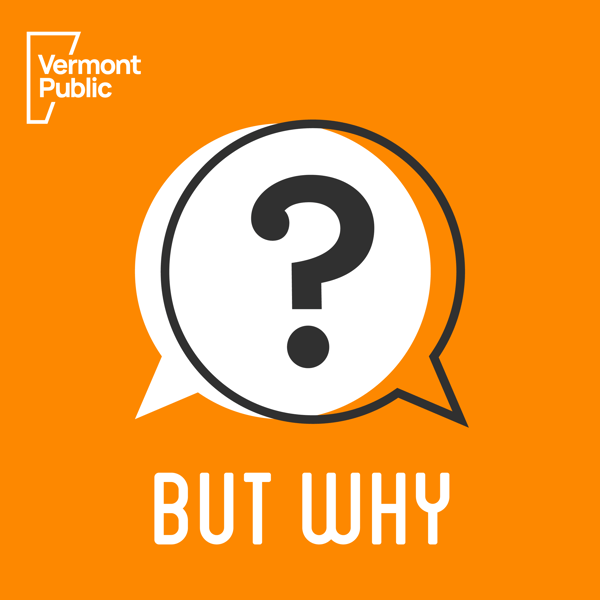Are Seeds Alive?
But Why: A Podcast for Curious Kids
Vermont Public
4.4 • 4.9K Ratings
🗓️ 4 June 2021
⏱️ 34 minutes
🧾️ Download transcript
Summary
Are seeds alive? What are they made of? Here in Vermont it's planting time, and we've been getting a lot of questions about seeds from kids around the world. In this episode we'll explore the importance of preserving seed diversity with Hannes Dempewolf of the Global Crop Diversity Trust. Crop Trust manages a repository of seeds from around the world at the Global Seed Vault in Svalbard, Norway, above the Arctic Circle.
Plus, ethnobotanist and Abenaki scholar Fred Wiseman shares a little bit about a project called Seeds of Renewal, which aims to find seeds traditionally grown by Abenaki people in our region and return them to cultivation.
Download our learning guides: PDF | Google Slide | Transcript
More Plant Episodes:
How Do Big Plants Grow From Such Small Seeds?
The Svalbard Global Seed Vault contains an enormous wealth of seeds from around the world. Unlike other seed banks, the vault is designed not to be used unless there are no other options in other seed banks. Seed banks are places where seeds are stored for future use in case of a disaster or crop failure, and are sometimes given out to help establish new populations of heritage or rare plants and crops. Seed banks also promote genetic diversity by keeping many varieties of seeds from many different plant species.
"Are seeds alive?" - Evie, 5, Hawaii
Yes, seeds are very much alive! At least the seeds that we use to grow food are alive. Seeds can die if they're not properly cared for, if they get too hot or cold or wet. But under the right conditions, they're just dormant.
"It means they're sleeping basically," Dempewolf says. "Seeds are dormant and they need to be activated to grow. They need light to grow, along with humidity and warmth, that's the conditions that allow seeds to grow."
"Different species of plants have very different kinds of seeds and different types of seeds also need very different conditions to grow. Some grow with very, very little humidity with very little wetness, and some need a lot. Some need to be submerged in you know under water for a while until they can grow. Some need to be frozen first before they can grow. Some seeds are made that they have to first be eaten by an animal and then pooped out again, so they can grow. Some grow with very, very little wetness, and some need to be submerged underwater for a while until they can grow. Some need to be frozen first before they can grow. Seeds are amazingly complex."
Transcript
Click on a timestamp to play from that location
| 0:00.0 | Hi, it's me, Jane. |
| 0:03.4 | One of the things we love about making but why is that we get to hear your voices in |
| 0:07.6 | the questions you send us. |
| 0:09.6 | From the plain old Goofy, my name is Winston, I'm eight. |
| 0:15.4 | To the very sweet, and I love you. |
| 0:19.1 | And so many of you close your messages out like this. |
| 0:22.6 | Bye, I love you, show. |
| 0:24.6 | We just want to say right back at you, we are thankful for our community of curious |
| 0:29.0 | kids around the world. |
| 0:30.6 | And adults who are listening, if you value this program, please consider sending some |
| 0:34.8 | love to Vermont Public in support of Bowie. |
| 0:37.8 | We are a nonprofit supported by our listeners. |
| 0:41.0 | You can make a gift today at BowieKids.org slash donate. |
| 0:45.6 | Thanks. |
| 1:10.2 | This is But Why, a podcast for curious kids from Vermont Public Radio. |
| 1:14.8 | I'm Jane Lintholm, I host the show. |
| 1:17.8 | Here in Vermont, where I and my friend and fellow But Why Maker Melody Bo-Det live, we've |
| 1:22.3 | just hit the date where it's safe to put just about any plants you want to grow in your |
| 1:26.6 | garden into the garden because there's very little chance of frost or below freezing |
| 1:31.1 | temperatures even overnight anymore. |
| 1:33.6 | So many of us are planting seeds or putting seedlings we started indoors into the nice warm |
| 1:38.3 | soil to grow. |
... |
Please login to see the full transcript.
Disclaimer: The podcast and artwork embedded on this page are from Vermont Public, and are the property of its owner and not affiliated with or endorsed by Tapesearch.
Generated transcripts are the property of Vermont Public and are distributed freely under the Fair Use doctrine. Transcripts generated by Tapesearch are not guaranteed to be accurate.
Copyright © Tapesearch 2025.

